
An Eagle-Mounted Camera and Atmospheric Dung: Behind Mongolia’s First Global Tourism Campaign

A production that involved strapping a camera to an eagle, trekking through the Gobi Desert, and lighting mountains of cow dung, The Ministry of Culture of Mongolia’s first global campaign set high ambitions to capture the country’s essence in the style of an epic feature film.
Shot, produced and serviced by the Mr+ group over 15 shoot and travel days across multiple continents, the campaign is the first production for Mr+Positive’s recently launched Singapore office and was produced for a modest budget.
Launched internationally across broadcast, digital, and social, the campaign amplified Mongolia’s visibility, strengthened the country’s cultural exchange and spotlighted Mongolian talent on a global stage.
To find out more, LBB’s Sunna Coleman spoke with director, Patrick Fileti, and Mr+ founder and executive producer, Peter Grasse, who go behind the scenes on the dynamic brand film that required a 10 hour trek through the Gobi Desert and up mountains to shoot with eagle hunters.
LBB> What was The Ministry of Culture of Mongolia looking for with its latest brand film, and what were your initial ideas?
Patrick> This was Mongolia’s first global campaign, so there was a lot riding on it. Edelman ECD Tim Green wanted something that truly stood apart. Not a glossy, surface-level tourism ad, but something deeper. Something modern, bold, and true to Mongolia. I remember getting the brief and instantly feeling the pressure, but also thinking, hell yeah, Mongolia.
We imagined an enigmatic Mongolian muse, carrying the spirit of the country out into the world. Her presence is magnetic. There’s an energy that draws people in. She lights up every place she visits with that infectious spirit and in the end brings the world back with her to Mongolia. It wasn’t the obvious route, but that’s what made it exciting. It gave us room to be expressive and cinematic without needing to explain everything. It was more about creating a feeling than delivering a message.
Finding the right person to embody that spirit was crucial. We searched far and wide for someone who truly felt like Mongolia. Someone grounded, charismatic, effortlessly cool. When we found Eny Jaki in Berlin, it just clicked. She had the presence, the depth, the edge, and a warmth that made everything feel magic.
We were also incredibly lucky to have iconic fashion designers Michel and Amazonka on board. They custom designed Eny’s outfits, blending modern design with traditional influences in a way that gave her look that unmistakable Mongolian fire. They also made a cameo in the film.
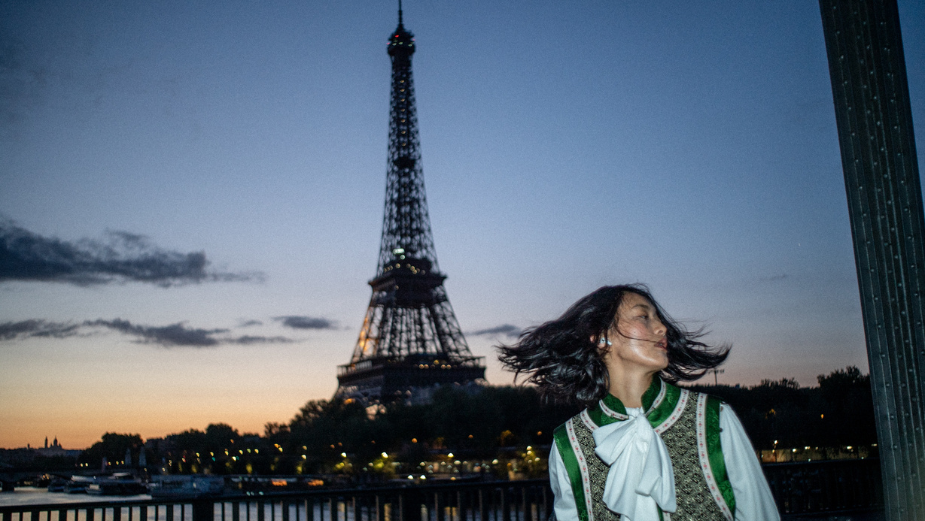
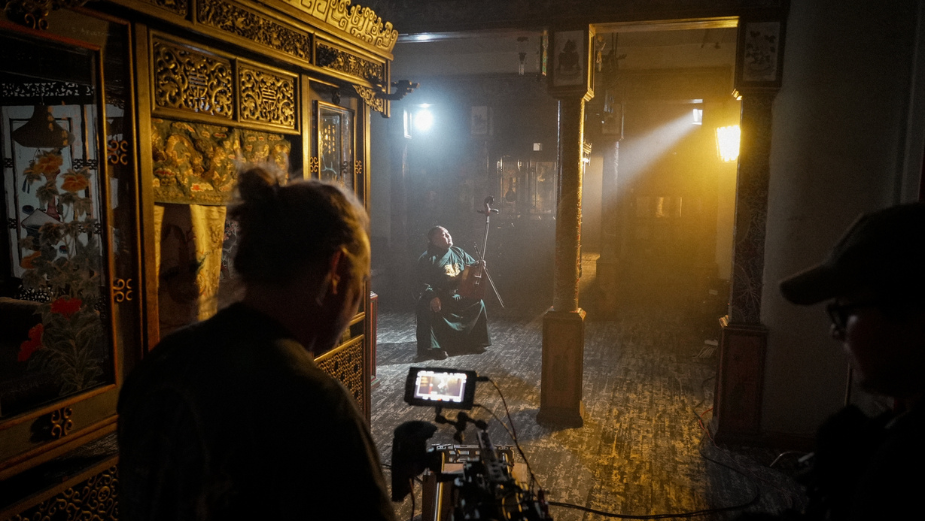
LBB> What made the film the right project to mark Mr+Positive Singapore’s debut production?
Peter> In 2024, Mr+Positive was ranked the #1 production company in both Japan and Asia by LBB’s creative rankings, and for that reason – as well as the fact that we knew our level of craftsmanship in filmmaking was something special in the region – we decided to expand into the rest of Asia from Tokyo. Singapore was the obvious choice for our second Mr+ office, as the Mr+Tokyo office has been servicing Singapore clients for a decade, and recently Mr+Post produced 3D billboards for Netflix Singapore around the world.
LBB> How did you approach capturing the essence of Mongolia? Were there specific visual or narrative references that guided the look and feel of the film?
Patrick> From the start, I knew I wanted it to have real pace. But rather than relying on constant camera movement, we keep the visuals more composed and arresting, letting the energy come from within the frame. The movement would come through the choreography, the performances, and the rhythm of the edit.
Together with my longtime collaborator and all-around legend DOP Jani Häkli, we embraced the limitations of a small budget and minimal crew. We made a conscious choice to keep things simple, so every shot had to count.
One of my favourite setups was a group of kids sitting on a barn fence in the steppe. We kept adding layers into the frame. Another boy on the fence, a girl climbing up, herders on horseback, and eventually about a hundred cows running behind them. We ran it over and over until it all landed in one perfect take. That kind of moment only happens when you stay open to what’s around you and build the vision together.
We treated every frame like that, always thinking about how it could carry depth and emotion, but with a sense of fun and rebellion.
LBB> Production was a collaborative effort across Mr+Positive’s various offices, with post by Mr+Post. What were the strengths of this multi-hub collaboration?
Peter> It was a dream to connect all the positive dots after a decade of developing Mr+Positive Tokyo for Japan service and Mr+Post for boutique post work across the region. Working within the Positive Production Group obviously had its benefits in that we could pool our resources, but more importantly, the major benefit of Mr+Positive is that we’ve educated a team of fresh-faced producers who aren’t sticks in the mud and can simply be super resourceful and get the job done.
I imagine many other companies would have just thrown in the towel when things got tough. There was a huge level of risk involved in making this production, as it was briefed on an extremely tight budget that we needed to make work across four countries – and one of those countries was extremely difficult to traverse and acquire the necessary gear and crew to produce what the director and producer had in mind for the final film.
Additionally, we made use of our valued partnerships with GPN and Supercluster to get the footage we required in those countries where Mr+ didn’t have a home office, and in London we even asked my daughter, Mrs+Positive Hana Grasse – recently graduated from UAL – to assist in servicing the London portion of the shoot.
Patrick> Given we had to shoot in four countries on a limited budget, having support from Mr+ global offices was essential. That network made it possible. Everyone understood the vision and went above and beyond to make it happen. It also meant we were working with friends, people who were all in it for the same reason, to make this the best it could be.
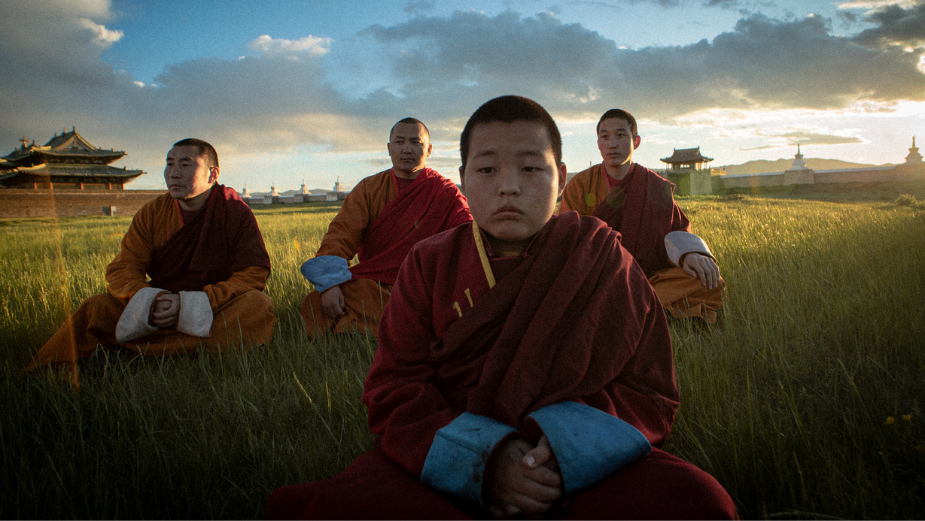
LBB> What were the most challenging or surprising moments during the shoot? How did you overcome these?
Patrick> Every production has its challenges, and for me it's about how you adapt in the moment and turn those challenges into something positive. The biggest hurdle on this one was definitely the budget versus the vision we had for it. This is where the Mr+ team really stepped up and dedicated so much time and love to making it happen.
Together with founder Pete Grasse and producer Karen Egawa, we found practical solutions like flying economy, staying in affordable hotels, carrying our own gear, taking multiple trains, waking up at 3am for sunrise, and wrapping at 11pm to make the most of each day. We all did it out of passion for the project, not for the paycheck. It was a tough shoot, but what carried us through was the spirit of the team.
That approach also meant working with local crew in London, Paris, Tokyo, and of course Mongolia. It felt especially meaningful in Mongolia, where foreign productions usually fly in most of their own crew. This time, it was almost entirely local. They were making something about their own country, and you could really feel how much it meant to them. That pride and energy ran through everything and lifted the whole production.
Peter> The entire shoot was a constant challenge and surprise. We rode over 10 hours through the Gobi Desert on camels, climbed mountains by foot carrying all our gear to get the shot with the Eagle Hunters, then drove another 10 hours to catch a train to a departure point where we went overland in off-road vehicles for six hours to shoot archers and monks in the middle of Mongolia – and then back to Ulaanbaatar to catch a plane to Tokyo, where we shot with our local crew the day we landed in order to make the budget work.
Some really interesting film techniques came out of this shoot – we strapped a GoPro to the back of an eagle’s head to get that bird’s-eye view of the Mongolian Steppe. We also lit mountains of dung to create the atmospheric haze we needed – better than any hazer. Altogether it was a fascinating and challenging shoot. Yet, more importantly, it was an incredibly warm and wonderful window into Mongolian history, culture, and people.
Mongolia is my new favourite place on this planet. It’s honestly so gorgeous and inspiring. The people are smiling, generous, and extremely warm-hearted. I highly recommend riding the train with pickles and vodka – it’s a once-in-a-lifetime experience.
As a producer who came to filmmaking from an anthropological academic background, this was really my cup of tea. My co-producer at Mr+, Karen Egawa, and I tried to learn and consume as much Mongolian history and culture as possible before we travelled there. Another challenge was that the director, Pat Fileti, was over-enthusiastic about getting the best light each day, which meant a lot of early mornings and late nights. Yet we didn’t expect anything less from Pat – a Mr+Positive director sharing the roster with Spike Lee, Alec Berg and Jay Roach.
LBB> Mr+Post played a significant role in finalising the film – can you tell us how the post-production process helped elevate the final piece?
Peter> We had a crazy turnaround for the first edit of the teasers, which were edited in-house at Mr+Post. Then the director edited the final film, and the colour grading and VFX were managed by Mr+Post through our overseas partners, as credited in the final credits. We couldn’t have done it if those partners weren’t excited about the project, which I think is a testament to the thrill and allure of Mongolia. Everyone wanted to work on this piece.
LBB> There’s a lot to choose from but if you had to pick, which is your favourite scene and why?
Patrick> Mongolia in its entirety was incredible. Every local who shared their passion and opened themselves to us was so welcoming, we truly felt the love. The day we spent with a family out on the steppe really stayed with me. Experiencing how they live off the land, you get a deep sense of simplicity and connection.
Filming at Fulham was a bucket list moment. Being on the pitch at halftime during the match against Manchester City, shooting with the players in front of a full stadium crowd, is something I’ll never forget.
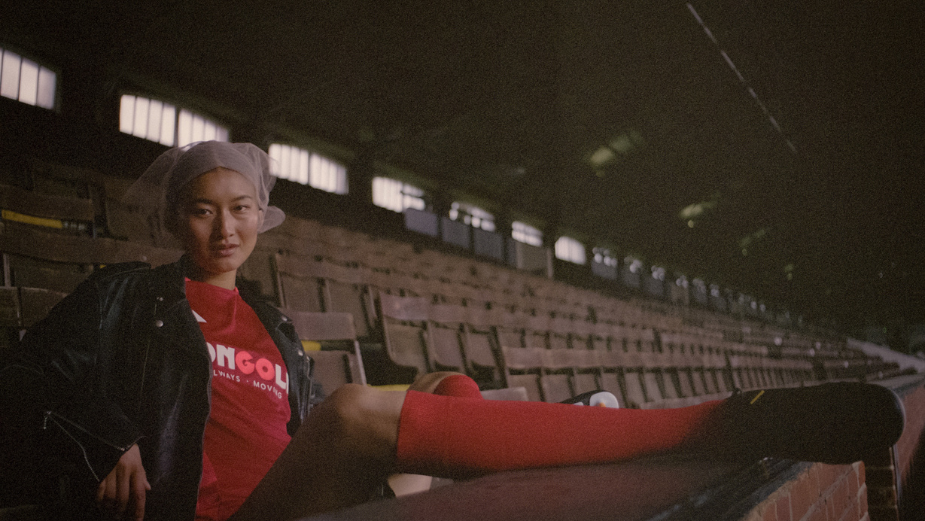
LBB> Any other interesting production or creative insights you’d like to share?
Patrick> Sometimes you just have to wear a lot of hats. On this shoot, one of them ended up being smoke effects. In Mongolia, they use dried cow dung to create atmosphere, and since we didn’t have a dedicated department for that, I took it on myself while also first AD’ing, recording sound, and shooting B Cam on 16mm film.
I remember one scene where we were filming Mongolian warriors riding through the forest. I had collected bags of dried dung earlier out on the steppe and was running around lighting them throughout the trees to get the smoke looking right. The riders were doing stunts, firing arrows from horseback as they charged through the forest, and at one point, an arrow skimmed my leg. Then it happened again on the next take. But hey, it looked incredible.
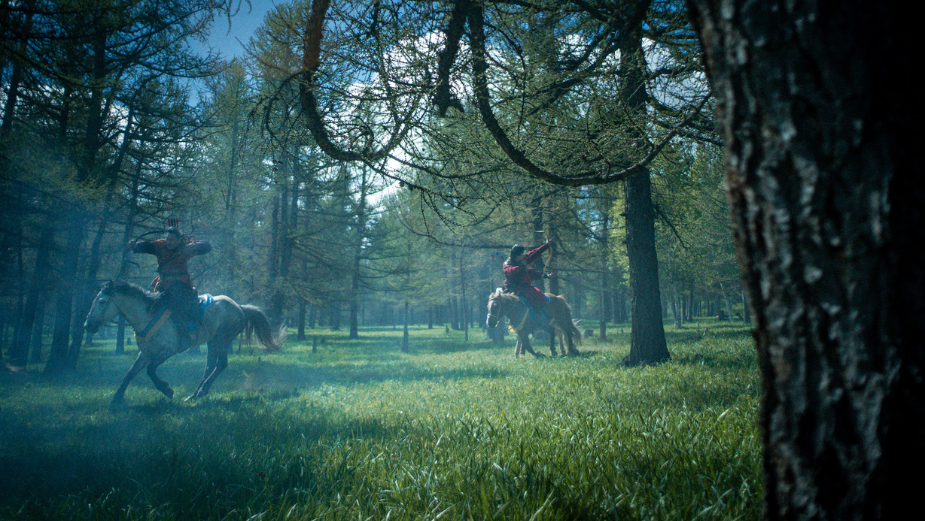
Peter> Karen and I went straight to Cannes Lions following the Mongolia shoot, and it was a dystopian AI nightmare. It was completely surreal coming from an incredible shoot experience in Mongolia – that translated directly into the feeling and impression of the film on the audience – to listening to a group of haters trying to destroy that experience so they could offer savings to clients by letting a computer create the work, without any o















